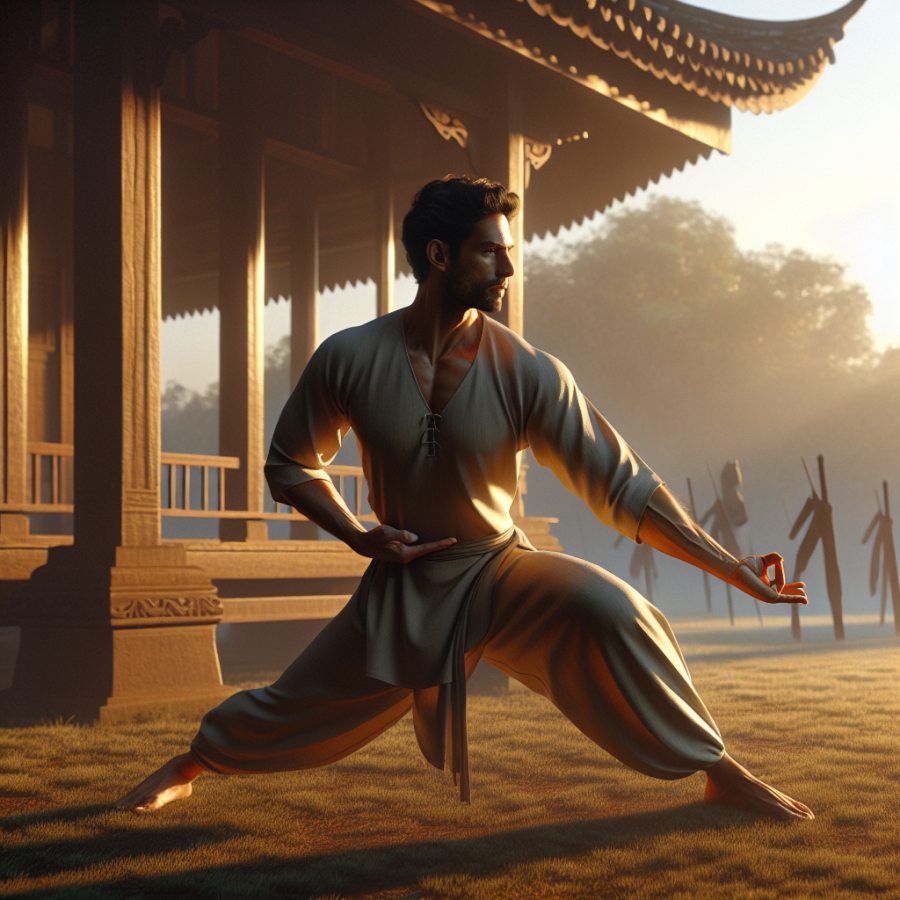Unveiling the Secrets of Vajra-mushti: The Combat Legacy of India
Vajra-mushti, often regarded as one of the lesser-known martial arts forms originating from the Indian subcontinent, is a profound blend of physical prowess and ancient wisdom. Translating to 'Diamond Fist', this combat style fuses the traditional elements of wrestling, grappling, and striking techniques, embodying the versatile and multifaceted approach of Indian warriors of yore.
The historical roots of Vajra-mushti trace back to the Vedic period, where it was not only a method of combat but also a way to settle disputes and establish hierarchies within the society. Manuscripts such as the Malla Purana provide detailed insights into the art, covering aspects ranging from ritualistic elements and training regimens to the moral code that guided practitioners—often referred to as 'Mallayuddha' warriors or fighters.
Training in Vajra-mushti was comprehensive and rigorous. It focused heavily on developing strength, flexibility, and agility alongside the cultivation of mental fortitude. Practitioners learnt to navigate conflict with a calm mind and strategic thinking, paying close attention to breath control—pranayama—which played a crucial role in mastering the art.
Techniques in Vajra-mushti include a complex catalogue of locks, holds, and throws aimed at subduing opponents efficiently. These moves often culminate in the application of the 'Vajra-mushti Mudra', a specific hand position reminiscent of holding a diamond or thunderbolt, symbolizing indomitable spirit and the ability to strike with precision. This mudra could be transformed into a formidable weapon when complemented with the knowledge of vital pressure points on the human body.
Another unique aspect of Vajra-mushti is the use of 'Astra-mushti', or the application of hand-held weapons that complement the unarmed techniques. These weapons were often symbolic and steeped in cultural significance, imbuing the practitioner with not just physical advantage but also a psychological edge.
The martial art also encompasses lessons on ethics and life philosophy. A Vajra-mushti warrior was expected to uphold values such as honor, bravery, self-discipline, and a commitment to protect the weak, reflecting the dharmic principles that permeate Indian philosophy.
Despite its rich legacy, Vajra-mushti saw a decline with the onset of colonial rule and the advent of modern warfare.
Read also:
Taking Flight: The Thrilling World of Model Aircraft
Techniques and Training: A Deep Dive Into the Discipline of Vajra-mushti
Vajra-mushti, an ancient Indian martial art, has been practiced for centuries, honing not only the physical prowess of its practitioners but also their spiritual discipline. To gain a deeper understanding of Vajra-mushti, a critical analysis of the techniques and training regimens is essential.
At the heart of Vajra-mushti is the concept of mastering one's body and mind to cultivate an unbreakable spirit – akin to the diamond weapon that inspires its name. Training in this martial art form is rigorous and demands an exceptional level of dedication.
Techniques in Vajra-mushti are manifold, with an emphasis on grappling, throws, joint locks, and strikes. One of the foundational moves is the proper formation of the fist, where fingers are tightly wrapped around the thumb, symbolizing the 'thunderbolt' or 'diamond fist.' This specific configuration is believed to concentrate the body's energy into a potent point of impact, delivering strikes with devastating efficiency.
Footwork is another pillar of Vajra-mushti, where practitioners are taught to move with agility and purpose. Each step is calculated to maintain balance while positioning oneself advantageously against an opponent. Training often involves complex drills to enhance coordination and spatial awareness, allowing practitioners to flow from one movement to another seamlessly.
Joint manipulation techniques are a trademark of this martial art, wherein practitioners are trained to immobilize or control opponents through skillful locks. These moves require a deep understanding of human anatomy to execute correctly and safely. Training starts with simple exercises to build up flexibility and strength, gradually progressing to more complex joint-lock techniques.
Breath control, or pranayama, is an integral part of Vajra-mushti training. By mastering breathing techniques, practitioners can better regulate their internal energy, or prana, during combat situations. This control over breath also aids in maintaining a calm state of mind, which is crucial for making strategic decisions swiftly in the midst of physical confrontation.
Conditioning plays a pivotal role in preparing the body for the demands of Vajra-mushti. Training regimens include a mix of traditional calisthenics, such as push-ups and squats, interspersed with yoga for flexibility and meditation for mental resilience. Diet is also emphasized, with a focus on foods that are believed to nourish the body and enhance stamina.
Combat drills are conducted with both simulated fights and sparring sessions to apply learned techniques in a controlled environment.




